Refine search
Actions for selected content:
2860 results in Computing and Society
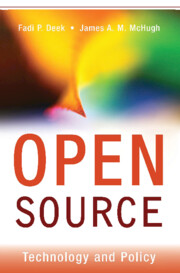
Open Source
- Technology and Policy
-
- Published online:
- 16 January 2010
- Print publication:
- 05 November 2007
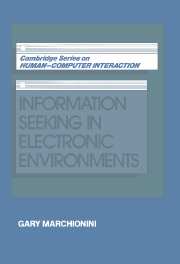
Information Seeking in Electronic Environments
-
- Published online:
- 14 January 2010
- Print publication:
- 26 May 1995
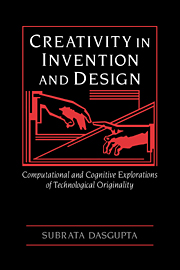
Creativity in Invention and Design
-
- Published online:
- 23 December 2009
- Print publication:
- 24 June 1994
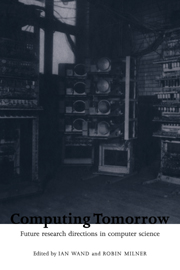
Computing Tomorrow
- Future Research Directions in Computer Science
-
- Published online:
- 10 December 2009
- Print publication:
- 13 July 1996
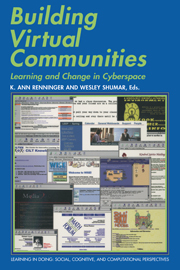
Building Virtual Communities
- Learning and Change in Cyberspace
-
- Published online:
- 12 November 2009
- Print publication:
- 08 July 2002
Frontmatter
-
- Book:
- Search User Interfaces
- Published online:
- 05 March 2013
- Print publication:
- 21 September 2009, pp i-vi
-
- Chapter
- Export citation
8 - Integrating Navigation with Search
-
- Book:
- Search User Interfaces
- Published online:
- 05 March 2013
- Print publication:
- 21 September 2009, pp 174-210
-
- Chapter
- Export citation
12 - Emerging Trends in Search Interfaces
-
- Book:
- Search User Interfaces
- Published online:
- 05 March 2013
- Print publication:
- 21 September 2009, pp 297-324
-
- Chapter
- Export citation
1 - The Design of Search User Interfaces
-
- Book:
- Search User Interfaces
- Published online:
- 05 March 2013
- Print publication:
- 21 September 2009, pp 1-28
-
- Chapter
- Export citation
Bibliography
-
- Book:
- Search User Interfaces
- Published online:
- 05 March 2013
- Print publication:
- 21 September 2009, pp 329-364
-
- Chapter
- Export citation
10 - Information Visualization for Search Interfaces
-
- Book:
- Search User Interfaces
- Published online:
- 05 March 2013
- Print publication:
- 21 September 2009, pp 234-280
-
- Chapter
- Export citation
Index
-
- Book:
- Search User Interfaces
- Published online:
- 05 March 2013
- Print publication:
- 21 September 2009, pp 365-374
-
- Chapter
- Export citation
Plate section
-
- Book:
- Search User Interfaces
- Published online:
- 05 March 2013
- Print publication:
- 21 September 2009, pp -
-
- Chapter
- Export citation
5 - Presentation of Search Results
-
- Book:
- Search User Interfaces
- Published online:
- 05 March 2013
- Print publication:
- 21 September 2009, pp 120-140
-
- Chapter
- Export citation
11 - Information Visualization for Text Analysis
-
- Book:
- Search User Interfaces
- Published online:
- 05 March 2013
- Print publication:
- 21 September 2009, pp 281-296
-
- Chapter
- Export citation
9 - Personalization in Search
-
- Book:
- Search User Interfaces
- Published online:
- 05 March 2013
- Print publication:
- 21 September 2009, pp 211-233
-
- Chapter
- Export citation
7 - Supporting the Search Process
-
- Book:
- Search User Interfaces
- Published online:
- 05 March 2013
- Print publication:
- 21 September 2009, pp 157-173
-
- Chapter
- Export citation
3 - Models of the Information Seeking Process
-
- Book:
- Search User Interfaces
- Published online:
- 05 March 2013
- Print publication:
- 21 September 2009, pp 64-90
-
- Chapter
- Export citation
Appendix: Additional Copyright Notices
-
- Book:
- Search User Interfaces
- Published online:
- 05 March 2013
- Print publication:
- 21 September 2009, pp 325-328
-
- Chapter
- Export citation
4 - Query Specification
-
- Book:
- Search User Interfaces
- Published online:
- 05 March 2013
- Print publication:
- 21 September 2009, pp 91-119
-
- Chapter
- Export citation
